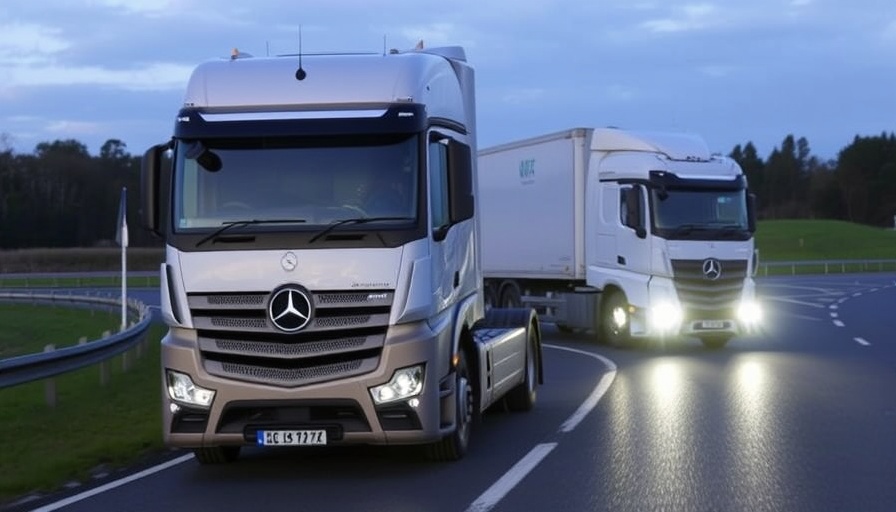
Mercedes-Benz Trucks Pioneers Electric Transition in the UK
As the urgency to combat climate change mounts, major automotive companies are embracing electrification. Mercedes-Benz Trucks has stepped up to champion this shift with the introduction of its TruckCharge programme in the UK—an initiative designed to guide both homeowners and businesses in transitioning to electric heavy goods vehicles (eHGVs). Offering a free consultancy service, TruckCharge aims to ease the complexities associated with electrification by providing tailored advice on infrastructure development and operational optimization.
Navigating the Transition to Electric Vehicles
The path to adopting electric trucks can be daunting, especially for organizations unfamiliar with this technology. Mercedes-Benz is addressing these challenges head-on by providing customers with strategic planning tools and access to funding opportunities. As Ibrahim Kraria, the eConsultancy Manager at Daimler Truck UK, stated, "As every depot and business is different, we’ve introduced the TruckCharge free consultancy service to demonstrate to customers how to overcome any perceived obstacles to running electric trucks." This approach highlights the importance of personalized solutions tailored to the unique needs of each business.
Collaboration with Vital EV: A Comprehensive Solution
The success of TruckCharge hinges on its collaboration with Vital EV, a charging infrastructure provider appointed as the official installation and support partner. Vital EV brings a wealth of experience, offering a full suite of services from design to maintenance, ensuring that businesses have access to reliable operation and expert support. Furthermore, the proposal integrates solar and battery storage solutions, adding another layer to sustainable operations, which many businesses are beginning to explore as part of their green energy goals.
Practical Insights: Charging Infrastructure and Options
For businesses looking to adopt electric trucks, understanding their charging requirements is paramount. TruckCharge offers charging stations ranging from 50 kW to 400 kW, suitable for various operational needs—from overnight charging to ultra-rapid solutions. This flexibility in charging infrastructure is crucial, particularly as businesses evaluate their potential routes and delivery schedules. Financial options provided by Daimler Truck Financial Services also assist in financing electric vehicles, further lowering the barriers to entry for those interested in zero-emission operations.
The Broader Impact of Electric Vehicles
The advancement of electric trucks is not only an industry shift but also a reflection of a broader societal desire for greener transportation. Integrating electric vehicles into logistics reduces carbon emissions, thereby contributing to a healthier environment. The UK’s commitment to a sustainable economy makes the adoption of electric trucks an essential step for businesses looking to future-proof their operations. Initiatives like TruckCharge are critical for educating stakeholders and sharing best practices.
Future Predictions: What Lies Ahead
The electric vehicles market is poised for substantial growth in the coming years. Analysts predict that by 2027, platforms like Milence, a joint venture focused on high-performance charging stations, will help establish at least 1,700 charging points across Europe. This not only signifies a robust network for electric truck operators but also emphasizes the growing acceptance of electric mobility as the future of transportation. These developments lead businesses and homeowners alike to explore electric vehicles as both practical and sustainable options.
In conclusion, as the electric vehicle market continuously evolves, initiatives like TruckCharge serve as vital resources for UK customers. The consultancy service not only provides technical insights but also fosters partnerships that empower businesses and homeowners to make informed decisions about electrifying their operations. Transitioning to electric can seem overwhelming, but with expert guidance and motivated businesses, the path to sustainability is becoming clearer.
Given the rapid changes in the EV landscape, now is the time for businesses and homeowners interested in green energy solutions to explore how Mercedes-Benz Trucks and the TruckCharge service can support their journey to sustainability. Take the first step today towards a greener future.
 Add Row
Add Row  Add
Add 



Write A Comment